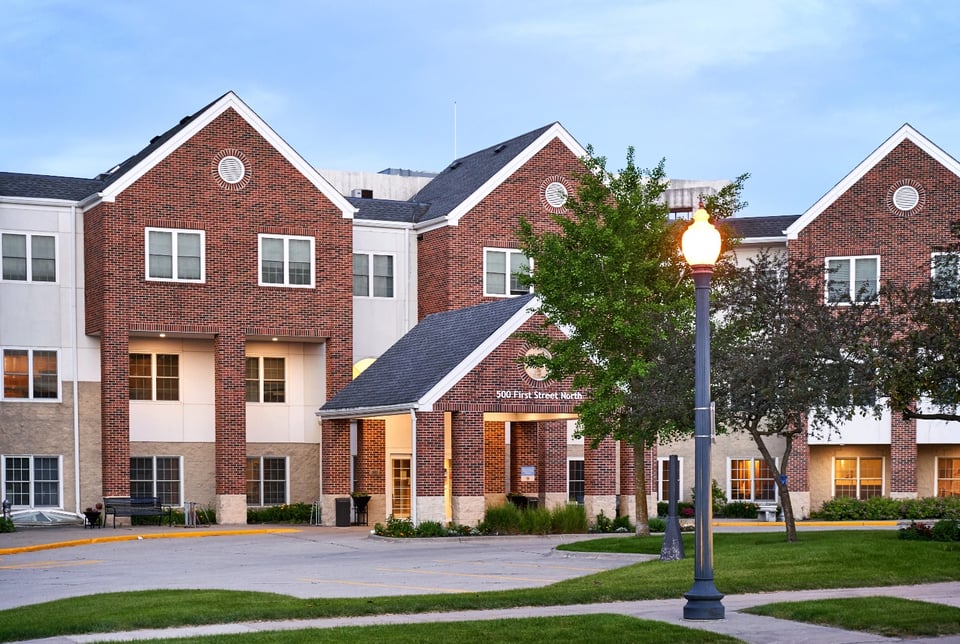Intentionally exploring assisted living empowers you to find the ideal support and nurturing environment for yourself or a loved one. Each person and their needs are unique so cookie-cutter care won’t do — you want a community with a thoughtful, dynamic approach to care.
Senior living communities provide different care levels of assisted living, catering to your or your loved one’s unique requirements and lifestyle. Understanding the assisted living levels of care will put you on a path toward support and peace of mind. Let’s dig into the details so you can make an informed decision.
What Is Assisted Living?
Assisted living is an excellent choice if you or your loved one would benefit from customized care, enriching social opportunities, and the comfort of knowing a team member is nearby in case of an emergency. Designed to help older adults remain as independent as possible, assisted living offers an active lifestyle, amenities, and assistance from caregivers when needed. These communities also feature on-site medical care such as physical and occupational therapy, simplifying the commute to and from routine appointments.
Various levels of care are available within assisted living, depending on your or your loved one’s medical needs and ability to manage activities of daily living (ADLs). These levels cater to people across a spectrum of needs, from those who want help with only a few daily tasks to those who require assistance throughout the day.
Levels of Assisted Living at WesleyLife Communities
Not all communities for older adults are created the same, and each defines levels of assisted living in varying ways. Before you or your loved one moves into assisted living at a WesleyLife community, you, your medical team, your loved ones, and community team members will determine the care needs that assisted living must meet and create a customized plan. Services can include:
- Personal care tasks such as dressing, bathing, or using the bathroom
- Housekeeping and laundry
- Transportation
- Medication management
- Physical, speech, or occupational therapy
- Skilled nursing
As time passes, if assisted living is no longer consistently meeting your needs, the team will hold a care conference to let you know that memory care or long-term care would be the logical next step. A community that offers a continuum of care beyond assisted living provides even more services such as short-term rehabilitation, long-term care, and memory care for those with Alzheimer’s disease and other dementias.
The more care you or your loved one needs, the more assisted living will cost. However, unlike some community living organizations, WesleyLife provides wiggle room in its levels of care. For instance, if you develop a new long-term care need that doesn’t fall under the assisted living umbrella, WesleyLife doesn’t automatically bump you to that long-term care level. One-size-fits-all care isn’t an option; we see you or your loved one as an individual and address your needs in a dynamic, respectful way.
Choose the Ideal Assisted Living Level of Care
Making informed choices about the ideal level of care in assisted living will help ensure ongoing comfort, safety, and quality of life — both now and in the future. Keep in mind the following factors during the decision-making process.
Assess Individual Needs
You or your loved one live with physical, cognitive, and emotional needs that assisted living should meet. The team members in your chosen community will work with you and your healthcare team to evaluate your ability to handle ADLs, your medical and dietary requirements, and your specialized needs. These factors determine which level of assisted living care is appropriate; ask team members how they plan to address each one and understand how your needs fit into the levels of care offered.
Consider Personal Preferences
Take into account preferences in location, amenities, and other aspects of the community that affect day-to-day life. Ensure the community not only provides the appropriate level of assisted living but also aligns with personal preferences. These can include:
- Location: Do you want to stay in a certain neighborhood to remain close to family members and friends? Is your favorite park or golf course nearby?
- Programming: Are art classes available to cater to your creative side? Are there regular outings to local shops and museums? Does your green thumb crave a regular gardening club meeting?
- Amenities: Does the community offer a fitness center or swimming pool? Do the dining choices satisfy your dietary needs and preferences? Do on-site medical services provide the care you need?
- Policies: Does the community welcome pets so your furry friend can move with you? Does the community encourage visits and engagement from loved ones, making it easy to stay in touch with important people in your life?
Ask About Team Member Qualifications
Ask about team members’ training and qualifications, and pay attention to the number of them on-site. Team members should be licensed and receive ongoing training, and a high team-to-resident ratio means better, more personalized care and attention for you or your loved one.
Consider Future Needs
Think about potential future care needs and whether the community can support them. A community that provides a continuum of care will offer memory care and 24/7 assistance in a healthcare center, for example. This can prevent the stress of relocating if medical and care needs change.
Transition Tips for Moving to Assisted Living
You’ve researched assisted living and found a great community — so, what’s next? Consider ways to prepare for the move and ease the transition into this new phase of life.
Plan Ahead and Organize
First, sort through belongings in your or your loved one’s current residence, deciding what to take, donate, or discard. Label boxes clearly, and pack essential items such as medicine, toiletries, and a couple of favorite books separately for easy access on moving day.
Recruit Help When Needed
Don’t try to handle the heavy lifting alone. If possible, hire movers or recruit loved ones to assist before and on moving day. Physical and emotional support is essential during this transitional time.
Personalize the New Space
Familiar items including photos, personalized decorations, and cherished keepsakes will create a comforting environment and establish a sense of ownership in the new living space, so prioritize them during the move-in process.
Meet Team Members and Residents
Before, during, and after move-in day, take the time to knock on neighbors’ doors and touch base with team members in the community. Participate in community programming and social opportunities to foster new connections and develop a sense of belonging.
Aging Is an Opportunity
Understanding the various levels of assisted living empowers you to make informed decisions that create a balance between assistance and autonomy. Ultimately, the goal is to choose a nurturing environment that enhances quality of life. In the ideal community, this journey can lead to a fulfilling and enriching chapter for everyone involved.
Ready to learn more about the lifestyles available at WesleyLife communities, from independent living to home care? Dig into the “Senior Living Options: Levels of Living” guide.




